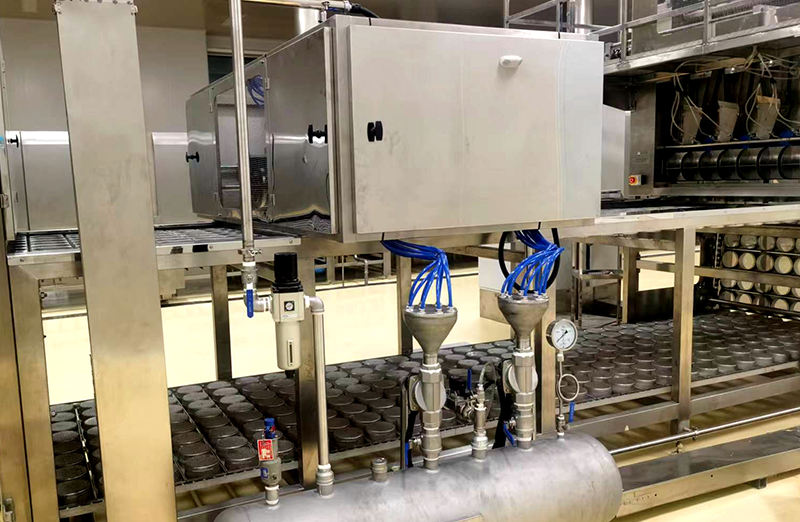Email: [email protected]
 2024.09.09
2024.09.09
 Industry News
Industry News
Precision Ingredient Mixing: At the core of noodle production is the careful mixing of ingredients, such as flour, water, salt, and optional additives like starch or egg powder. Modern noodle production lines utilize highly automated ingredient dispensers that are calibrated to deliver exact quantities with minimal deviation. This precision ensures that each batch starts with a uniform base, which is critical to achieving consistent dough characteristics. Advanced mixing technologies further ensure that these ingredients are combined evenly, preventing pockets of under- or over-hydrated dough that could negatively impact noodle texture. Some systems even allow for real-time adjustments based on ingredient moisture content or ambient conditions, enhancing the overall uniformity of the dough.
Advanced Dough Kneading Technology: The kneading process is essential in developing the gluten structure that gives noodles their characteristic elasticity and chewiness. State-of-the-art noodle production lines are equipped with kneading systems that can precisely control the time, speed, and intensity of kneading to match the desired noodle type. Whether producing firm, chewy noodles or softer, more delicate varieties, the production line can automatically adjust kneading parameters to achieve the ideal texture. Some advanced systems monitor dough development in real time, making micro-adjustments to ensure uniform gluten formation across all batches.
Controlled Sheeting and Cutting: The dough sheeting stage is where consistency in noodle thickness is achieved, which directly impacts texture, cooking time, and appearance. Automated sheeting rollers, guided by sensors, maintain consistent pressure and rolling speed to produce dough sheets of uniform thickness. High-precision cutting mechanisms then slice the sheets into noodles with exacting width and length specifications. Variations in noodle dimensions can lead to uneven cooking or undesirable texture, so the production line employs precise cutting tools and automated feedback systems to ensure each noodle strand is identical in shape. This uniformity is key to ensuring a consistent mouthfeel across batches.
Automated Cooking or Drying: In the case of instant noodles or dried noodle products, precise control over the cooking or drying process is critical to achieving consistent texture. Automated steamers, fryers, or drying chambers are equipped with advanced climate control systems that regulate temperature, humidity, and time. These controls ensure that noodles are exposed to uniform heat and moisture conditions, preventing undercooking or over-drying, which can lead to texture variations. Additionally, multiple quality checks are typically integrated into these stages, monitoring moisture content and texture in real time to ensure noodles reach the desired state before proceeding to packaging.
Real-Time Quality Monitoring: Many modern production lines feature integrated sensors and quality monitoring systems that track key parameters such as dough consistency, moisture levels, noodle thickness, and temperature at various stages of production. These systems use real-time data to ensure production remains within predefined specifications. If any deviations are detected—such as inconsistencies in dough hydration or irregular noodle dimensions—automated controls can make immediate adjustments to maintain the desired quality. This real-time monitoring minimizes human error and enhances the ability to produce a uniform product consistently.
Temperature and Humidity Control: Maintaining consistent environmental conditions is crucial during both cooking and drying processes. Automated temperature and humidity control systems ensure that the drying or cooking chambers remain within specified ranges to avoid texture inconsistencies. These systems often include redundant monitoring points to maintain uniform heat distribution throughout the production line. For example, in drying processes, consistent airflow and humidity regulation ensure even moisture evaporation, reducing the risk of over-dried or under-dried noodles. In steam cooking, precise temperature control ensures the noodles are evenly gelatinized, resulting in a uniform texture.
NON-FRIED INSTANT NOODLE PRODUCTION LINE
